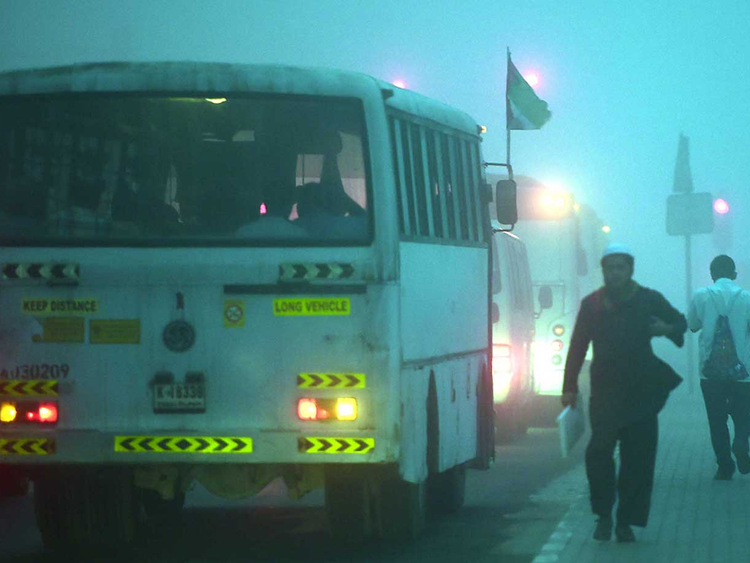
Dubai: Motorists on their way to work on Wednesday morning found themselves driving through poor weather conditions – accompanied by hundreds of fellow commuters who were all stuck in heavy traffic jams along major roads.
More than 300 outbound flights were reported to have been affected by Wednesday morning’s fog from as early as 3am to 1pm, including Dubai International Airport, Abu Dhabi International Airport and Sharjah International Airport, according to Flight Tracker.
The National Centre of Meteorology and Seismology (NCMS) issued a warning earlier in the day for residents to be careful while driving, as visibility was reduced to less than 50 meters across coastal and internal areas of the country and the highways.
— UAE WEATHER (@NCMS_media) December 28, 2016
The heavy blanket of fog caused major tailbacks on Mohammad Bin Zayed Road that extended from Umm Al Quwain, through Sharjah’s National Paints and up until Mirdif, leaving motorists with little patience by the end of their commute.
- Video footage courtesy: Mohammad Rustam Azmi/Gulf News reader
Sharjah’s Al Ittihad Road was at a standstill, with a sea of cars stemming from Expo Centre that continued until the underpass at Al Mulla Plaza.
Heavy traffic jams were also reported on Maliha Road and Al Dhaid Road towards Dubai, with cars also reported stuck in bumper-to-bumper traffic on Emirates Road from Academic City until the intersection after Dubai Investments Park.
Flights were also affected, with Dubai Airports telling passengers to expect delays.
If you're flying from DXB this morning, expect some delays due to fog. Please check with your airline or dubaiairports.ae for flight updates
— Dubai Airports (@DubaiAirports) December 28, 2016
The NCMS’s forecast expects Thursday to be the same, with thick fog and mist in the morning, and light to moderate winds. The relative humidity is likely to increase during Wednesday night and early tomorrow morning, with temperatures ranging from 14 to 31 degrees Celsius in coastal areas, and from 10 to 34 degrees Celsius in internal areas.
Dubai Police have warned motorists to exert caution while driving through heavy fog, and to leave enough distance between vehicles ahead, to reduce speed gradually and not to use the car’s hazard lights except in an emergency.
Dear driver:
— Dubai Policeشرطة دبي (@DubaiPoliceHQ) December 28, 2016
Use low beam lights and useindicators when changing lanes.#TrafficAwareness #DubaiPolice#YourSecurityOurHappiness pic.twitter.com/nwku9imjPv










